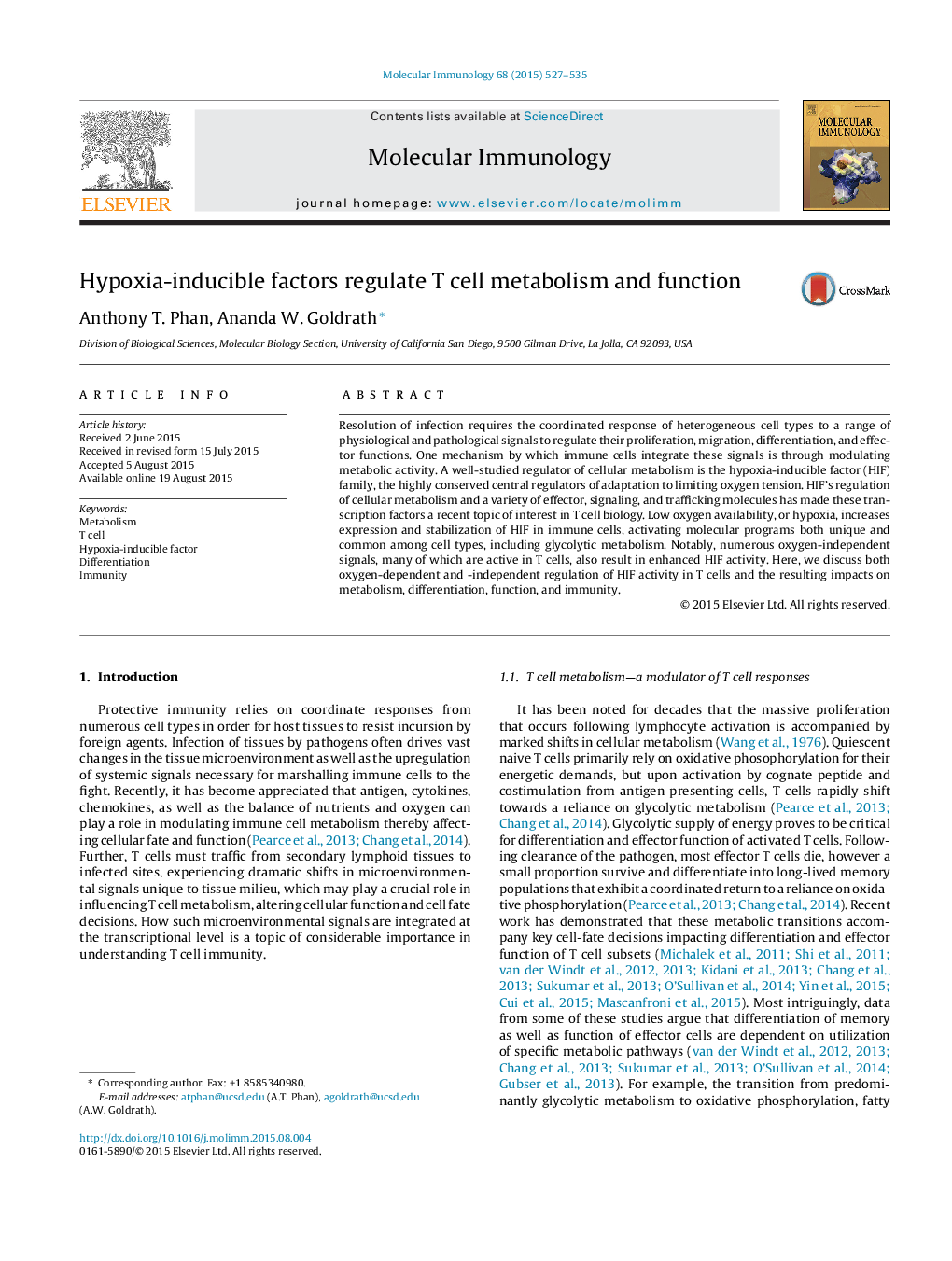| کد مقاله | کد نشریه | سال انتشار | مقاله انگلیسی | نسخه تمام متن |
|---|---|---|---|---|
| 2830669 | 1163749 | 2015 | 9 صفحه PDF | دانلود رایگان |

• T cells modulate metabolism in response to environmental signals.
• Oxygen and immune stimuli stabilize HIF activating a transcriptional program.
• HIF is a regulator of T cell metabolism, differentiation, and function.
• HIF integrates numerous signals as well as oxygen to drive unique T cell responses.
• Many questions remain regarding the HIF-pathway and T cell biology.
Resolution of infection requires the coordinated response of heterogeneous cell types to a range of physiological and pathological signals to regulate their proliferation, migration, differentiation, and effector functions. One mechanism by which immune cells integrate these signals is through modulating metabolic activity. A well-studied regulator of cellular metabolism is the hypoxia-inducible factor (HIF) family, the highly conserved central regulators of adaptation to limiting oxygen tension. HIF’s regulation of cellular metabolism and a variety of effector, signaling, and trafficking molecules has made these transcription factors a recent topic of interest in T cell biology. Low oxygen availability, or hypoxia, increases expression and stabilization of HIF in immune cells, activating molecular programs both unique and common among cell types, including glycolytic metabolism. Notably, numerous oxygen-independent signals, many of which are active in T cells, also result in enhanced HIF activity. Here, we discuss both oxygen-dependent and -independent regulation of HIF activity in T cells and the resulting impacts on metabolism, differentiation, function, and immunity.
Journal: Molecular Immunology - Volume 68, Issue 2, Part C, December 2015, Pages 527–535